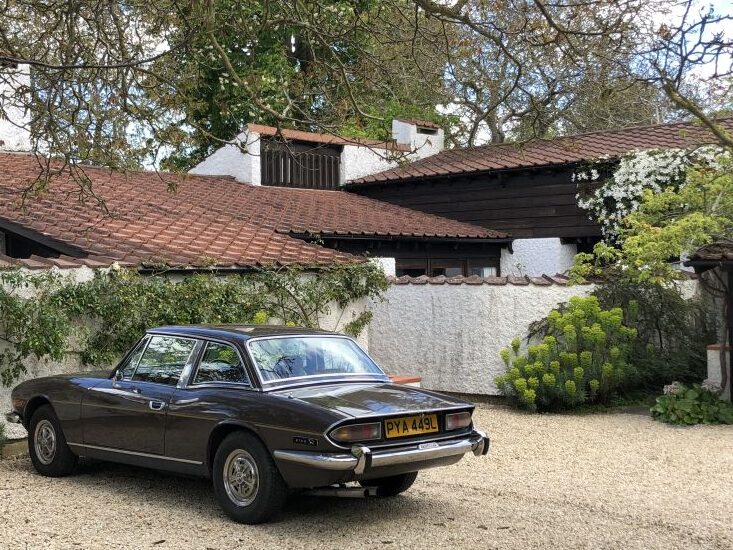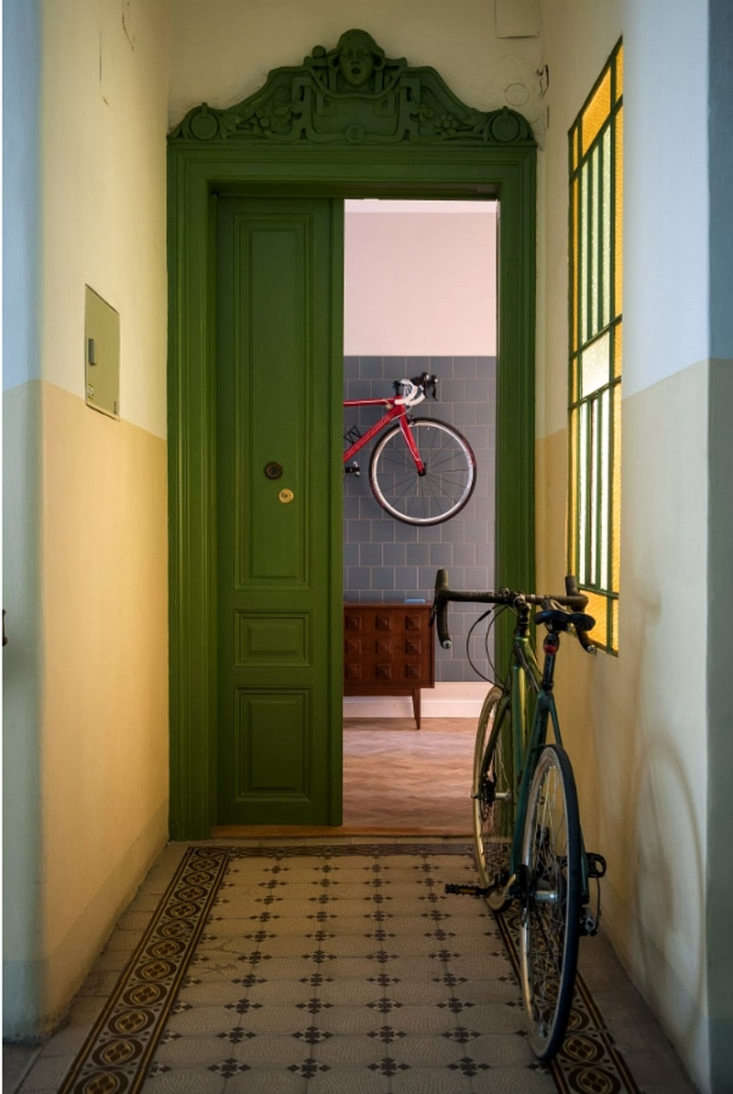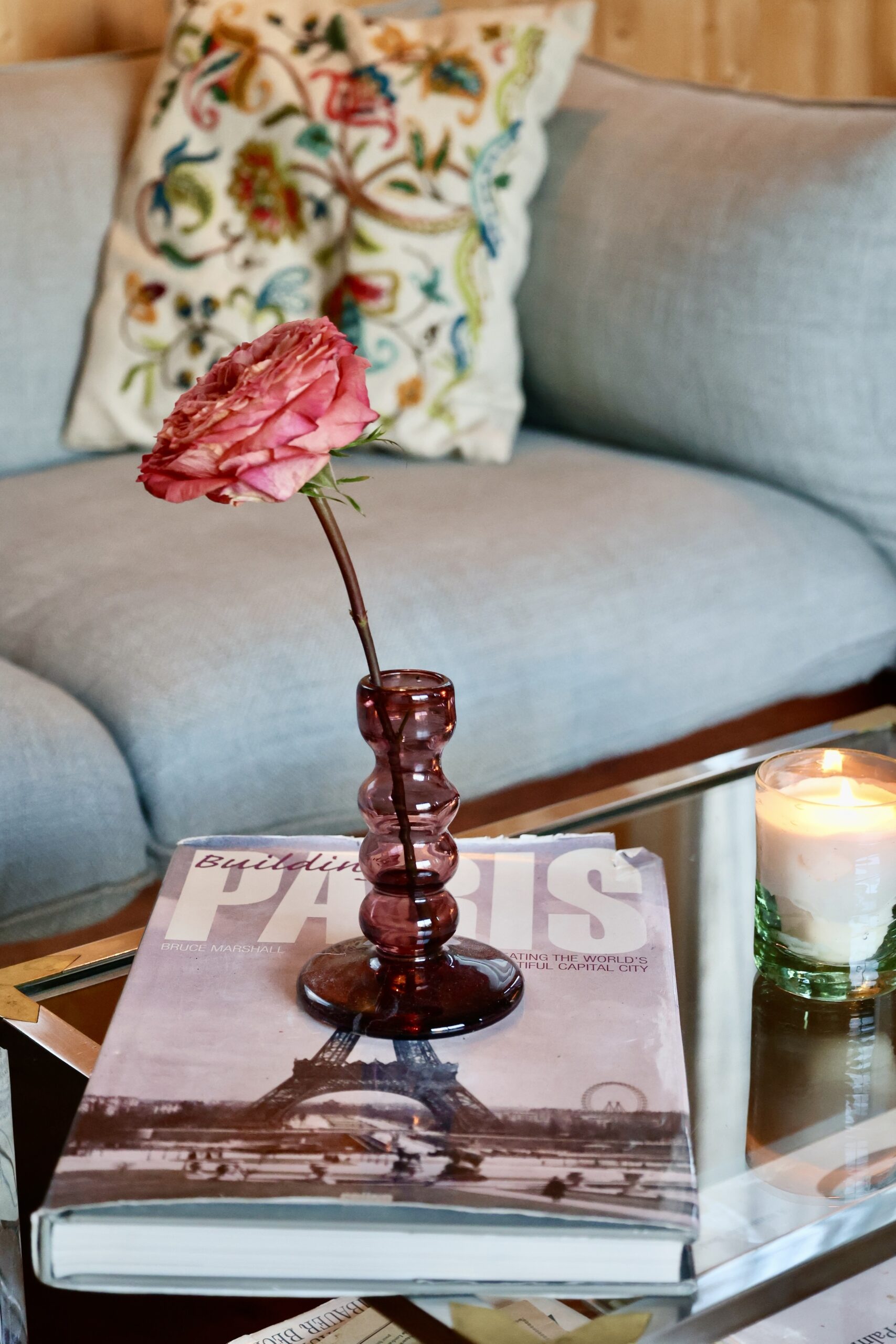Peter Aldington may have designed just a dozen houses over the course of his career, but he has an outsized influence over generations of architects—and in particular, over British architect Gary Collins.
After seeing just two slides of Aldington’s work in a college architecture class, Collins, inspired, took the train to Haddenham village in Buckinghamshire, England, to seek an internship at his firm, Aldington, Craig and Collinge. He got the internship…and much more than he could ever have imagined: Decades later, Collins would purchase Middle Turn, one of the three homes at Turn End, a half-acre compound designed by his mentor—and the very project that had moved Collins to seek out the influential architect all those years ago.
Collins and his wife, Sally, have lived in Middle Turn since 2018 (the other two homes on the property are named The Turn and Turn End). Their neighbors? None other than Aldington and his wife, Margaret, who occupy Turn End, the largest of the three. (The third building is rented out.) “The houses share an entrance courtyard with covered car port. Peter and Margaret both still live there and are into their 90s now,” says Collins.
Aldington had designed the compound to be a perfect marriage between architecture and landscape design, so even though the relatively small lot would hold three homes, the outdoor spaces would be equal in importance. Famous for his uncompromising standards, Aldington, with the help of Margaret and a team of local craftspeople, built the house himself. It would take three years, with construction ending in 1963.
The Turn End Trust was established in 1998 to promote the merging of building and garden design and, after bequest by the Aldingtons, to conserve and maintain the historical property. The Trust, of which Gary is a trustee, hosts public tours of the grounds as well as gardening classes and creative workshops. The next “Open Day” won’t be until May 2026; in the meantime, here’s a sneak peek of Middle Turn, Collins’ dream-come-true home.
Photography by Kasia Bobula, courtesy of Vitsoe, unless noted.
Above: The view of the compound from the outside. Turn End is a master class in melding traditional village building vernacular with modern design.
 Above: Just about nothing has changed since the Aldingtons built the homes in the early ’60s. The exterior walls are made of wychert (a mix of of white chalk, which was locally abundant, clay, and straw) and the roof is composed of terracotta tiles, a combination that can be seen throughout the village.
Above: Just about nothing has changed since the Aldingtons built the homes in the early ’60s. The exterior walls are made of wychert (a mix of of white chalk, which was locally abundant, clay, and straw) and the roof is composed of terracotta tiles, a combination that can be seen throughout the village.
 Above: While the exterior has an old-fashioned cottage look, the interior is mid-century modern. Collins’ home is small, just about 1,000 square feet, with three bedrooms and two bathrooms. Clerestory windows provide light without sacrificing privacy.
Above: While the exterior has an old-fashioned cottage look, the interior is mid-century modern. Collins’ home is small, just about 1,000 square feet, with three bedrooms and two bathrooms. Clerestory windows provide light without sacrificing privacy.
 Above: One of the perks of living in an architect-designed home is clever, custom storage all over the house.
Above: One of the perks of living in an architect-designed home is clever, custom storage all over the house.
 Above: “We bought quite a few items [designed by Dieter Rams for Vitsoe] recently to furnish the living room, but we have been building our collection over the past 20 years,” says Collins. “This is where Rams was exceptional,” he said in a recent interview with Vitsoe. “It was the paring down, only doing what was essential and being innovative.”
Above: “We bought quite a few items [designed by Dieter Rams for Vitsoe] recently to furnish the living room, but we have been building our collection over the past 20 years,” says Collins. “This is where Rams was exceptional,” he said in a recent interview with Vitsoe. “It was the paring down, only doing what was essential and being innovative.”
 Above: The walls are composed of foamed concrete blocks, painted white, with joinery and exposed roof beams in redwood and Douglas fir.
Above: The walls are composed of foamed concrete blocks, painted white, with joinery and exposed roof beams in redwood and Douglas fir.
 Above: What is the most surprising part about living in Middle Turn? “I would say it is living in a house with so much glass and surrounded by garden spaces, yet through thoughtful design, we are all totally private and are not overlooked by anyone,” says Collins.
Above: What is the most surprising part about living in Middle Turn? “I would say it is living in a house with so much glass and surrounded by garden spaces, yet through thoughtful design, we are all totally private and are not overlooked by anyone,” says Collins.
 Above: Each of the three homes has a private courtyard.
Above: Each of the three homes has a private courtyard.
 Above: Collins and his wife used to take their two young daughters to the “Open Days” at Turn End, where they would happily wander around the property. Now young adults, they volunteer at the twice-yearly events.
Above: Collins and his wife used to take their two young daughters to the “Open Days” at Turn End, where they would happily wander around the property. Now young adults, they volunteer at the twice-yearly events.
 Above: The layouts and positioning of the homes were influenced by the mature, majestic trees on the property.
Above: The layouts and positioning of the homes were influenced by the mature, majestic trees on the property.
 Above: “We replaced some of the old electrics and have done work on the below-ground drainage and some above-ground plumbing. We are now programming some work to joinery where it is starting to need attention,” says Collins. “Other than that, we have not needed to do very much…and we are not inclined to change anything. We very much love it as it is.”
Above: “We replaced some of the old electrics and have done work on the below-ground drainage and some above-ground plumbing. We are now programming some work to joinery where it is starting to need attention,” says Collins. “Other than that, we have not needed to do very much…and we are not inclined to change anything. We very much love it as it is.”
See also:



